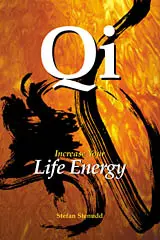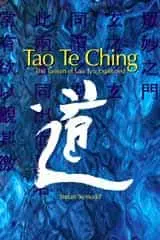Qi Extension Exercise 5

Grip
Holding something is strenuous for the simple reason that it is against nature. Life is movement and change, whereas that which is halted from moving comes closer to death. For that reason, there is always a measure of unease connected to holding something – and the unease increases while your grip remains.
The Book
The life energy qi (also chi or ki) explained, with several very easy exercises to awaken, increase, and use it. Click the image to see the book at Amazon (paid link).
|
The trick in grabbing something strongly and persistently is to do it with a feeling of movement – a flow instead of a halt. Qi breathing will accomplish that.
How to do it
- You can sit or stand, but avoid lying down in this exercise. Make sure that your posture is good.
- Put the object you want to grip close enough for you to reach it comfortably. The best is to have it at about the same height as your belly. Practice with loose objects in the beginning, but later on you should be able to do it also on objects that are fastened. Choose an object with a smooth surface, so that you can grab it without discomfort.
- Close your eyes and commence qi breathing. The breathing and qi flow should work fine before you move on to the next step.
- Exhale and put your hand around the object you want to grip, but do not tighten the grip yet. Use your right hand if you are right-handed, otherwise your left, so that you feel the most able. When you have practiced this several times it does not matter that much what hand you choose. By then you do good to try both hands.
- Start a long inhalation, and then tighten your grip on the object. Notice that you grip while inhaling. Most of the grip’s force should be in your little finger. Actually, that is the only finger you need to focus on when you tighten your grip. The other fingers will do what they shall – neither more nor less. Because of your focus on the little finger, the angle of your fist will change a little. The side with your little finger will protrude slightly, and the thumb side will retreat correspondingly. It should feel like you breathe in through your fist.
- Release the grip before your inhalation ends. When you have trained this some more, you can keep the grip longer by having a continued feeling of inhaling, although your lungs are filled with air. It is also possible to keep the feeling of breathing in when you exhale – but that takes some practice.
- Once is never. Take a few deep and calm breaths, and then repeat the exercise.
- Continue as long as you feel that it works well, without your body getting tense. It should feel like you suck the object to you, or even into you, with your inhalation. But keep your arm extended to avoid actually pulling the object toward you. On the other hand, if you really want to pull the object, you should do that, too, while breathing in.

The nature of breathing in is to bring things toward you, whereas the nature of breathing out is to push things away from you. Therefore you should grip while inhaling, if you want to keep the object close to you or pull it toward you. Grip while exhaling if you want to hold the object off or push it away.
If you grip while exhaling you will notice that the angle of your fist will change in the opposite direction to the one when you inhale. The thumb side of the hand will tilt slightly forward, and the little finger side will move toward you. Still, you should always focus on the little finger when you grip something.
When you need to hold an object for long, grab it while inhaling or exhaling, according to your intention: Use the former if you want to hold it close to you, and the latter if you want to keep it away from you. Then concentrate on feeling like you breathe through your fist, both when inhaling and exhaling. You will notice that the grip remains strong, without being that very straining.
But as I said in the introduction to this exercise: Holding something is basically against nature. Therefore it is never that very restful or comfortable.
Qi Extension Exercises
Here is a set of simple exercises to extend your qi. Now, you'll start to really experience the use of it. I recommend you to follow the order given below, the first time around. Then you can safely make your own priorities.
© Stefan Stenudd
This is a chapter of my book Qi: Increase your Life energy.
My Books About Life Energy
Here are the two books I have written on the subject of life energy. This website contains some of the material from the first one.
Click the image to see the book at Amazon (paid link).

Qi — Increase Your Life Energy
The life energy qi (also chi or ki) explained, with several very easy exercises to awaken, increase, and use it.

Life Energy Encyclopedia
Qi, prana, spirit, ruach, pneuma, and many other life forces around the world explained and compared. Click the image to see the book at Amazon (paid link).
My Other Websites
The many life force beliefs all over the world, ancient and modern, explained.
Taoism, the old Chinese philosophy of life, based on
Tao, the Way. Also, the complete
Tao Te Ching translated and explained.
Aikido, the peaceful martial art. Its basics, principles, techniques, and more — in texts, images and videos.
The 64 hexagrams of the Chinese classic
I Ching and what they mean in divination. Free online reading.
Other Books by Me
Click the image to see the book at Amazon (paid link).

Tao Te Ching
The Taoism of Lao Tzu Explained
The great Chinese classic, translated to English and extensively commented.

Aikido Principles
Basic Concepts of the Peaceful Martial Art
Aikido principles, philosophy, and basic ideas.

Fake Lao Tzu Quotes
Erroneous Tao Te Ching Citations Examined. 90 of the most spread false Lao Tzu quotes, why they are false and where they are really from.
 About Me
About Me
I'm a Swedish author and aikido instructor. I've written several books about aikido, qi energy and other life force concepts. I'm also an historian of ideas, researching the thought patterns in creation myths.
Click the image to get to my personal website.



 Qi — Increase Your Life Energy
Qi — Increase Your Life Energy


